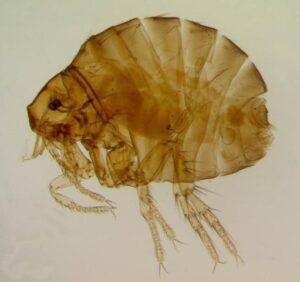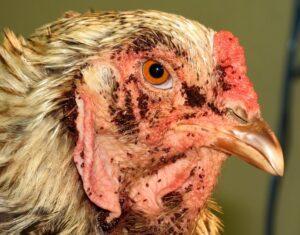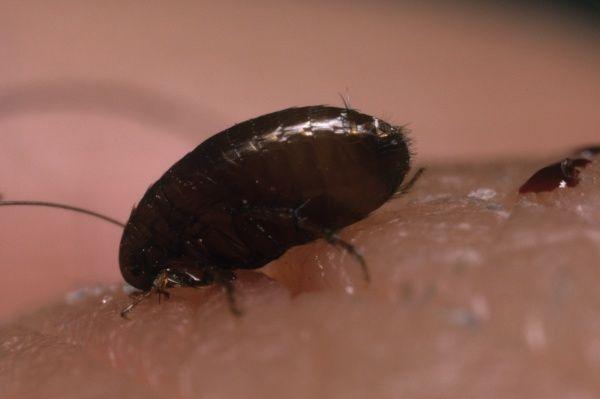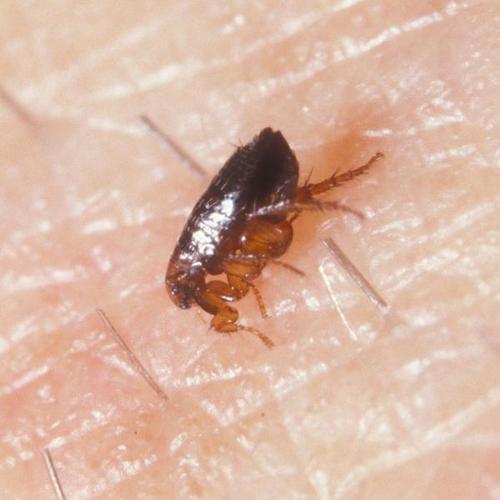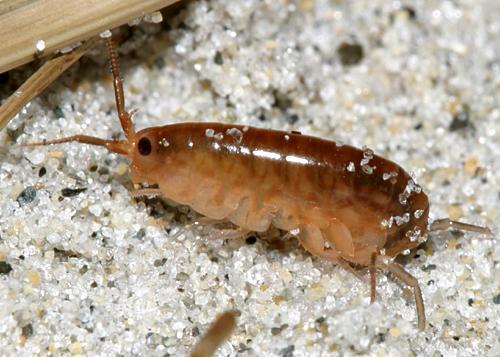Sticktight Flea (Echidnophaga gallinacea)
Updated on
17/11/2022The sticktight flea is a pest to dogs, cats, chickens, and other birds. It can even affect humans. It embeds its head in the flesh of the host and can’t be removed easily. Though they don’t transmit diseases, their attachment can lead to secondary infection, causing itching, swelling around the eyes, and even starvation until death. Other common health issues are dermatitis and skin ulcerations.
Scientific Classification
- Class:Insecta
- Order:Siphonaptera
- Family:Pulicidae
- Genus:Echidnophaga
- Species:E. gallinacea
Conservation Status
Description
Sticktight fleas are dark brown in color and lack both genal and prenatal combs. It is one of the smallest fleas hosted by domestic animals measuring approximately 2 mm, almost half the size of a cat flea. They are wingless but have strong hind legs that allow them to jump large distances. Their body is laterally compressed, and they have an angular head. Backward-facing spines on their legs help them to lodge firmly on the host.
Distribution: Many continents spanning from North America to Australia.
Habitat: Tropical, subtropical, and temperate climates.
Do They Bite/Sting: Yes.
Lifespan: 2 months -2 years.
Predators: No natural predators.
Behavior and Characteristics
Diet
They feed on the blood of hosts like native birds, poultry, turkeys, ducks, dogs, cats, and humans.
Life Cycle
1. Egg Stage
The eggs are laid in the ulcers formed by the female and subsequently fall on the ground.
2. Larva Stage
The developing larvae feed on organic debris including the feces of the adult fleas. After several weeks it spins a silken cocoon covered with dust and dirt to pupate.
2. Pupa Stage
The pupae are ovoid in shape, covered with a sticky, loosely spun cocoon that accumulates surrounding matter to keep it hidden. This stage lasts for a few days. However, if adverse environmental conditions prevail, the insect stays within the cocoon for several weeks or even months.
3. Adult Stage
The newly-emerged adult remains without a host for the first 5-8 days. Before mating, the female attaches herself to the host by her elongated, serrated mouthparts. She remains in that position for the rest of her life. She embeds into the bare skin of the host to begin feeding and activate her reproductive system. The male, who hops around freely throughout his life, finds an immobile female and fertilizes her.
Getting Rid of Sticktight Fleas
Sticktight fleas can be removed by grasping and pulling firmly with tweezers. Infection can be prevented by applying an antibiotic ointment to the affected area. If the number of fleas is too high to be removed individually, a flea product approved for application on animals should be applied according to the instructions on the label. Care should be taken so that it doesn’t get into the animal’s eyes.
To avoid reinfestation, the premises should be treated to eliminate chances of larval development. A solid concrete floor for poultry nesting can prevent larval development in organic matter. Insecticides meant for treating outdoor areas for fleas should be used. Burning infested organic material like animal bedding and poultry litter is recommended.
Source
edis.ifas.ufl.edu, scontent.fccu25-1.fna.fbcdn.net, thedogtrainingsecret.com




